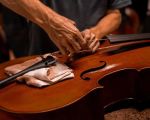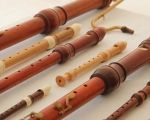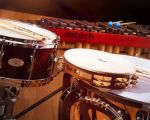1. Understanding the Used Musical Instruments Market
Before you dive into selling your instrument, it’s essential to understand the market dynamics. The demand for used musical instruments varies widely by type, brand, condition, and rarity. For example, vintage guitars by well-known brands often fetch premium prices, while beginner instruments may attract budget-conscious buyers.
Knowing your instrument’s place in the market will help you set realistic expectations and develop a tailored sales strategy. Research current listings and sold prices to gauge what buyers are willing to pay.
2. Preparing Your Used Instrument for Sale
Presentation matters greatly in selling used instruments. Thoroughly clean and, if necessary, service your instrument to ensure it looks and sounds its best. Small repairs or professional tuning can increase buyer confidence and justify a higher price.
Include any original accessories, cases, or documentation you have, as these add value. The better the condition and presentation, the more appealing your instrument will be to prospective buyers.
3. Pricing Strategies to Maximize Your Sale
Pricing your instrument correctly is a balancing act. Set it too high, and you might deter buyers; too low, and you leave money on the table. Consider factors like age, condition, brand reputation, and market demand. Online marketplaces and local music stores can provide comparative pricing information.
Be open to negotiation but have a minimum acceptable price in mind. Occasionally, offering a slight discount or bundle deal (like including a stand or case) can help close the sale faster.
4. Choosing the Right Platforms to Sell Your Instrument
The sales platform you choose can significantly impact your success. Online marketplaces such as Reverb, eBay, or Craigslist offer broad audiences but vary in fees and buyer trust. Local music stores might buy directly or sell on consignment, providing convenience but possibly at a lower price.
Social media groups and forums dedicated to musicians also offer targeted communities where you can connect with serious buyers. Weigh the pros and cons of each to select the best fit for your goals and instrument.
5. Writing Effective Listings and Taking Quality Photos
Clear, honest descriptions combined with high-quality photos are critical. Highlight the instrument’s key features, condition, any modifications, and history. Include details about playability and sound quality to attract knowledgeable buyers.
Photograph the instrument from multiple angles, capturing close-ups of unique or worn areas. Well-lit, sharp images build trust and help your listing stand out.
6. Negotiation and Completing the Sale
Once inquiries begin, respond promptly and courteously. Be prepared to negotiate on price and terms while maintaining your minimum acceptable price. Transparency about the instrument’s condition and history fosters trust.
For local sales, arrange safe meeting places. For shipping, pack the instrument securely and use tracked services. Confirm payment before handing over the item to avoid scams.
7. Real-Life Stories from Sellers
Mark sold his vintage saxophone through an online marketplace after servicing it professionally. His detailed listing and high-quality photos attracted multiple offers, allowing him to sell above his asking price. Meanwhile, Emily found success selling a used keyboard locally, benefiting from personal connections and immediate cash payment.
These stories show that tailoring your approach to your instrument and audience, combined with preparation and clear communication, can lead to a satisfying sale experience.
For those looking to sell used musical instruments with expert support, Beat Trigger offers valuable services and resources to connect you with the right buyers and maximize your returns.








